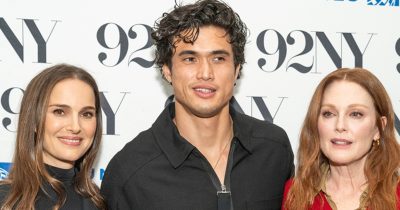
Dr. Rachael Gunn, also known by her b-girl name “Raygun,” created quite a stir during the 2024 Paris Olympic Games with her performance in the breaking event.
Her routines, which earned her zero points in all three round-robin battles, sparked a wide array of reactions online. Some viewers found her unconventional style amusing, while others criticized her academic background and questioned her intentions.
However, as it turns out, Dr. Gunn had a clear purpose behind her performance.
Rachael Gunn, a 36-year-old Australian breakdancer, faced tough competition in the debut of breaking at the Olympics. She lost all three of her battles — 18-0 against the USA, France, and Lithuania.
Despite the losses, her unique style and approach quickly went viral on social media, where she was both mocked and praised. One person on X (formerly known as Twitter) commented: “If this Raygun lady turns out to be a comedian who somehow blagged her way through qualifiers and all the way to the Olympics, and was bad on purpose, it will be one of the greatest bits ever achieved.”
Amid growing criticism, Rachael addressed the backlash on her Instagram page, hinting at gender bias. She wrote (per News.com.au): “Looking forward to the same level of scrutiny on what the bboys wear tomorrow,” pointing out the double standards in how male and female breakdancers are judged.
Rachael had earned her spot as Australia’s b-girl representative after winning the Oceania Breaking Championships in 2023. In breaking, the terms “B-girl” and “B-boy” are used to refer to female and male breakdancers, respectively. The “B” stands for “break,” derived from the breakbeats in music to which the dancers originally performed. Breaking, also known as b-boying or b-girling, emerged in the 1970s as a key element of hip-hop culture.
In a post shared by her country’s breaking team, Rachael encouraged others to embrace their individuality: “Don’t be afraid to be different. Go out there and represent yourself, you never know where that’s gonna take you.”
After her Olympic performance, she explained her intentions further, saying: “All my moves are original. I was never going to beat these girls on what they do best, the dynamic and the power moves, so I wanted to move differently, be artistic and creative because how many chances do you get in a lifetime to do that on an international stage?”
Dr. Gunn’s academic background also drew attention, sparking controversy. She holds a PhD in Cultural Studies and a BA in Contemporary Music from Macquarie University. Her research focuses on the cultural politics of breaking, blending cultural theory, dance studies, popular music studies, media, and ethnography.
Her critics, however, viewed her Olympic performance as a stunt. Hannah Berreli, editor for On The Woman Q, criticized her on X, saying: “Hundreds of Australian athletes who have dedicated their entire lives to athletic excellence will be forgotten because Rachael wanted to bulk up her ResearchGate profile.”
Despite the criticism, Rachael remained unapologetic, emphasizing her pride in representing Australia. She also reflected on the significance of wearing the Australian Olympic tracksuit, particularly the one with Indigenous prints. “It was a real moment of pride for me to wear the Australian uniform,” she said.
Rachael’s performance sparked a wave of memes, with one of her moves being dubbed “the kangaroo.” Although her unconventional approach raised eyebrows, it underscored the importance of creativity in breaking. “I go out there and I show my artistry. Sometimes it speaks to the judges, and sometimes it doesn’t. I do my thing, and it represents art,” she told reporters.
Unfortunately, breaking will not be included in the 2028 Los Angeles Olympic Games, per SBS Australia.
READ MORE
- Hijab-wearing athlete praised for showing up ‘xenophobic France’ on Olympic podium
- Imane Khelif’s dad breaks his silence after Olympic boxer’s gender controversy




